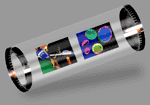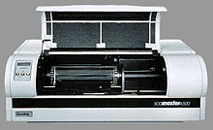
Summary
Good Stuff
The Basics

Processed film is taped to a transparent drum and placed in the scanner; as the drum spins, it moves past an aperture-controlled light source. The light passes through the film allowing the colors of the sampled area to be detected and converted into electronic signals. Several processing sequences occur to the sampled data before being mapped to the image file. Resolution is determined by the size of the sampling area. Drum-scanning can record detail and color with great accuracy, but only to the level of the original film image.
Drum-scans can
record almost all
the detail on the
film, including dust,
and scratches.
record almost all
the detail on the
film, including dust,
and scratches.
The quality of film is the benchmark to which digital photography is held. Drum-scanning is generally considered an outstanding method for digitizing film. So, what's the problem with just shooting film in the first place? Nothing... really. But, workflows have changed due to digital's improving quality and faster production times. Film just requires more time than does digital. This is especially true for retouching, as drum-scanning records every single flaw on a piece of film. Digital has matched film's quality and overcome film's shortcomings. Still, when batteries die, and software crashes, many photographers would sell their soul for a piece of film.
- Extraordinary resolution and dynamic range.
- Full control of tonal-curves and color.
- No interpolation at native-resolutions.